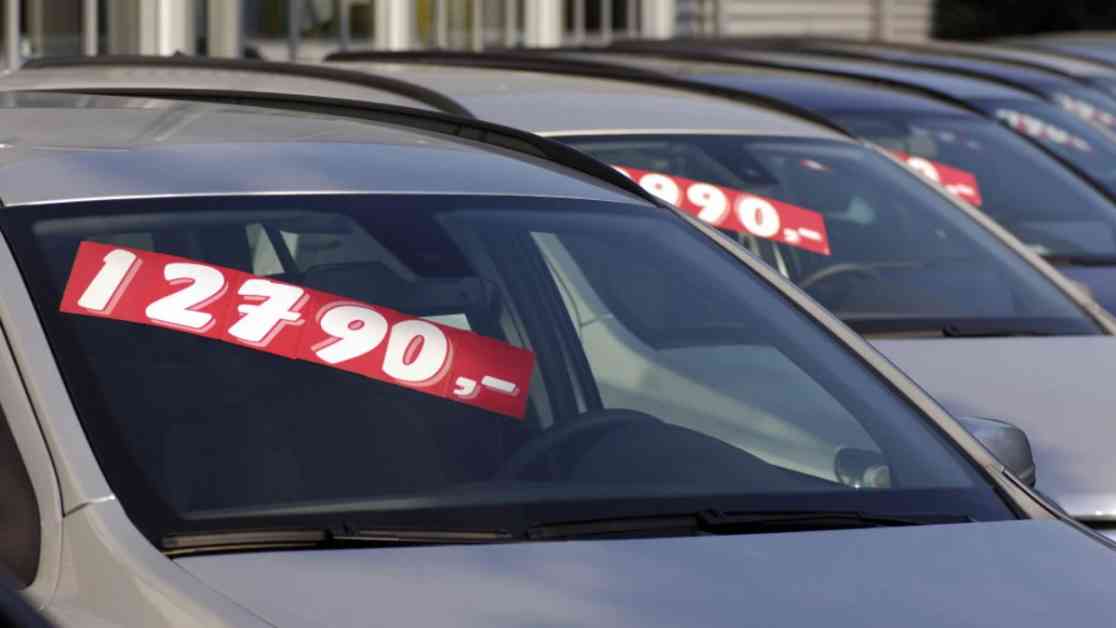Used Car Prices Experience Significant Decline in July – Autoblog Analysis
In the ever-changing landscape of the automotive market, July saw a substantial drop in used car prices, marking the most significant decline in any major category within the Consumer Price Index (CPI) over the past year. This downward trend comes as the car market strives to return to a sense of normalcy following the pandemic-induced inflation that has affected various sectors.
According to data from the Bureau of Labor Statistics (BLS) released on Wednesday, used car prices fell by 2.3% in July compared to the previous month and by 10.9% from the same time last year. In comparison, new car prices also experienced a decrease, falling by 0.2% in July and 1.4% from the prior year. These price drops indicate a significant shift in the market dynamics, reflecting the ongoing adjustments in supply and demand.
The decline in used car prices is particularly striking when compared to the peak prices observed in February 2022, with a notable decrease of 19.4%. This sharp decrease follows a period of substantial price increases, with used car prices surging by over 40% annually in both June and July 2021, as well as in January and February 2022. Despite the recent declines, used car prices remain 16.9% higher than they were in July 2019, highlighting the continued impact of market fluctuations over the years.
The overall Consumer Price Index (CPI) saw a modest increase of 0.2% in July compared to the previous month and a 2.9% rise over the prior year. While this marks a slight deceleration from the 3% annual gain recorded in June, it still exceeded economists’ expectations of a 3% annual increase. These figures indicate a nuanced picture of the current economic landscape, shaped by various factors influencing pricing trends across different sectors.
The downward pressure on both used and new vehicle prices can be attributed to the buildup of inventories, leading to increased competition and resulting in lower prices, particularly in the used car segment. The normalization of inventory levels in the new-car market has been a key driver of these pricing adjustments, with dealers offering discounts and incentives to clear out aging inventory. As new car prices trend downward, the values of newer used vehicles have correspondingly declined, reflecting the interconnected nature of the automotive market.
Auto research firm Edmunds highlighted these trends in its Q2 vehicle prices report, emphasizing the direct relationship between the new-car market dynamics and the pricing trends in the used car segment. The influx of new vehicles onto dealership lots over the past year has paved the way for discounts and incentives on existing inventory, resulting in a shift in pricing patterns across the industry. While this normalization of auto prices bodes well for buyers seeking affordable options, dealers may experience a slight pinch as they adjust to the evolving market conditions.
Despite the falling prices and increased inventories, automakers such as Ford (F), GM (GM), and Toyota (TM) have reported strong sales at the dealer level, underscoring the resilience of the industry amidst changing market dynamics. GM, in particular, anticipates only modest drops in average transaction prices, indicating a degree of stability in the face of fluctuating pricing trends.
For used car dealers, there is some positive news on the horizon. The Manheim used vehicle value index (MUVVI) registered a slight increase in July compared to June, suggesting a rise in demand for used cars. This index, which tracks prices paid by dealers at the wholesale level, often serves as a leading indicator for consumer market trends, signaling potential shifts in pricing and demand.
Analysts at Manheim predict that a decrease in the number of leased vehicles entering the used market may contribute to further price increases in the near future. This raises the question of whether this uptick in prices will be sustained or merely a temporary blip in the larger market landscape. As the industry continues to navigate the complexities of supply and demand, dealers and consumers alike will need to adapt to these evolving pricing dynamics.
In conclusion, the recent decline in used car prices in July reflects the ongoing adjustments in the automotive market as it strives to find a balance between supply and demand. While this shift may present challenges for dealers, it also offers opportunities for buyers seeking more affordable options in the used car segment. As the industry continues to evolve, stakeholders will need to closely monitor pricing trends and adapt their strategies to navigate the changing landscape of the automotive market.










